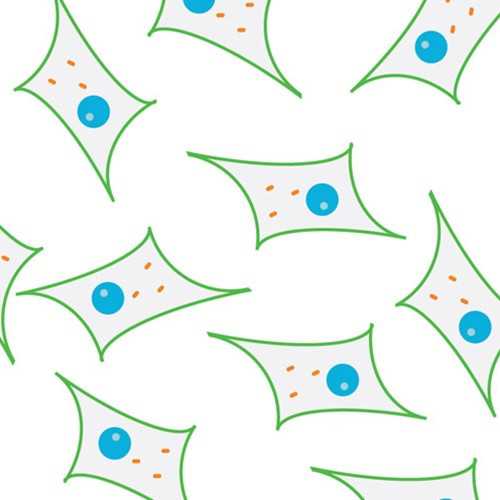Dicentrarchus labrax Embryonic Cell Line (DLEC)
DLEC is a continuous adherent cell line derived from early embryos of the European sea bass Dicentrarchus labrax.
Highlights:
- Cells show a modal chromosome number of 48
- Useful to study marine biotechnology applications
The European bass (Dicentrarchus labrax) is a primarily ocean-going fish native to the waters off Europe's western and southern and Africa's northern coasts.
From the laboratory of Francesco Buonocore, PhD and Giuseppe Scapigliati, PhD, University of Tuscia.
DLEC is a continuous adherent cell line derived from early embryos of the European sea bass Dicentrarchus labrax.
Highlights:
- Cells show a modal chromosome number of 48
- Useful to study marine biotechnology applications
The European bass (Dicentrarchus labrax) is a primarily ocean-going fish native to the waters off Europe's western and southern and Africa's northern coasts.
From the laboratory of Francesco Buonocore, PhD and Giuseppe Scapigliati, PhD, University of Tuscia.
Specifications
| Product Type: | Cell Line |
| Name: | DLEC |
| Cell Type: | Embryonic cell line |
| Accession ID: | CVCL_6F79 |
| Source: | European sea bass - Early embryo |
| Morphology: | Fibroblast-like |
| Organism: | Dicentrarchus labrax (European sea bass) |
| Biosafety Level: | BSL 1 |
| Subculturing: | Split every ~72 hours, when semi-confluent. Note that the cells are quite sensitive to trypsinization. Use minimal amounts of trypsin-EDTA after two washes with PBS. Monitor the trypsinization at the microscope, when cells became rounded detach by pipetting with complete L-15 and split 1:3. |
| Growth Conditions: | Grow at 22 °C in sealed flasks (or avoid CO2) with Liebovitz's L15 medium containing Pen-Strep and 10% heat-inactivated FBS, adjust the osmolarity of all solutions by adding 5 ul/ml of 3M NaCl. |
| Cryopreservation: | FBS+DMSO (10+1) |
| Comments: |
|
| Storage: | LN2 |
| Shipped: | Dry Ice |
Provider
From the laboratory of Francesco Buonocore, PhD and Giuseppe Scapigliati, PhD, University of Tuscia.
Comments
- Karyotype analysis of DLEC cell line indicates the occurrence of chromosomal rearrangements during stabilization, which commonly happens during the immortalization process;
- Some metabolic pathways of the cell line could have been altered compared to in situ cells and/or primary cultures of sea bass;
- The nucleotide sequence of some genes is slightly different compared to sea bass counterparts showing slightly higher homology with other Perciformes like sea bream and silver sea bream, although the corresponding amino acid sequence is identical with the sea bass one;
References
- Scapigliati G, Buonocore F, Mazzini M. Biological activity of cytokines: an evolutionary perspective. Curr Pharm Des. 2006;12(24):3071-81. doi: 10.2174/138161206777947489. PMID: 16918435.
- Buonocore F, Libertini A, Prugnoli D, Mazzini M, Scapigliati G. Production and characterization of a continuous embryonic cell line from sea bass (Dicentrarchus labrax L.). Mar Biotechnol (NY). 2006 Jan-Feb;8(1):80-5. doi: 10.1007/s10126-005-5032-2. Epub 2006 Jan 1. PMID: 16249966.
If you publish research with this product, please let us know so we can cite your paper.


